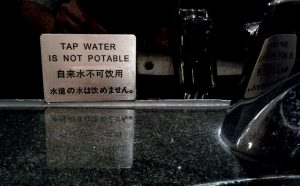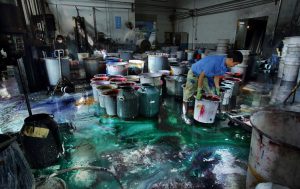More than half of all Chinese groundwater is classified as poor or very poor, according to a press notice from the Ministry of Environmental Protection (MEP). After monitoring at 4,929 points across 198 city-level administrations in China during 2012, the Ministry admitted that just 11% of China’s groundwater merits the top ranking of “excellent”.
There has been a wave of complaints about water quality following a campaign that dared local environmental chiefs to swim in the rivers they were responsible for. None have so far accepted the challenge.
According to the press notice, water quality in rivers in the west and north-west of China is mostly excellent, while there are varying degrees of pollution in eastern rivers such as the Hai, Huai and Songhua, which flow through urbanised and industrialised regions.
Ma Zhong, Dean of Renmin University’s School of Environment and Natural Resources, says that though there has been no change in freshwater environments, groundwater is continuing to suffer from worsening pollution.
Speaking at chinadialogue’s 2012 China Environmental Press Awards, Ma said that 80% of China’s cities take drinking water supplies from groundwater, yet 57% of groundwater is not up to drinking water quality. "They must be drinking polluted water,” he said.
An additional problem is that the public are restricted in their ability to assess the quality of their water. The MEP’s press notice gives only a general description of the issue, without further details.
For example, the press notice reported that of China’s five largest lakes, the Hai suffers moderate pollution, while three others are lightly polluted. Ma says there should be a clear explanation of the difference between “moderate” and “light” pollution – for example what percentage of water in a certain section reaches what standard.
“Forty per cent of the Hai is worse than class V – how can that be moderate pollution?” he asks.



